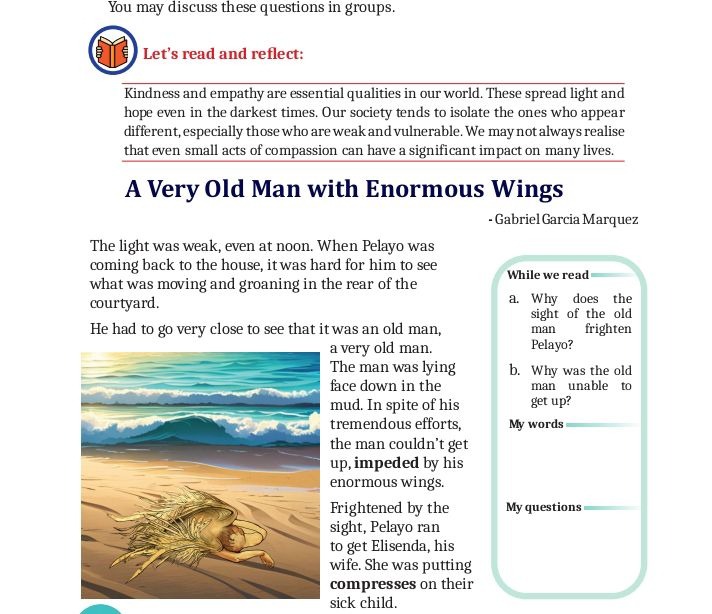Detailed Study Notes on On His Blindness
Detailed Study Notes on On His Blindness
Introduction
"On His Blindness" is one of John Milton’s most famous sonnets, written after he became completely blind around 1655. The poem is deeply personal, reflecting Milton’s inner conflict as he struggles to accept his blindness and fears that he can no longer serve God as a poet. However, through a spiritual realization, he learns that patience and faith are also forms of service. The poem ultimately conveys a message of acceptance, emphasizing that God does not judge people by their actions alone but also by their willingness to submit to His will.
Structure and Form
The poem is a Petrarchan sonnet consisting of fourteen lines divided into an octave and a sestet. The octave introduces Milton’s doubt and despair, while the sestet resolves this inner conflict with an answer from Patience. The rhyme scheme follows the traditional Italian sonnet pattern: ABBA ABBA CDE CDE. Written in iambic pentameter, the poem maintains a steady rhythm, adding to its contemplative and solemn tone.
Summary and Explanation
The poem begins with Milton contemplating his blindness. He refers to his lost eyesight as "light" and laments that it has been "spent" before he has reached old age. He feels trapped in "this dark world and wide," emphasizing both his literal blindness and his sense of isolation. He is troubled by the thought that the talent God has given him, his ability to write poetry, is now useless. This leads him to question whether God expects him to continue working despite his disability.
As he struggles with this doubt, he recalls the biblical Parable of the Talents, in which a servant who hides his talent instead of using it is punished. Milton fears that, like the unfaithful servant, he is failing in his duty to God. The anxiety builds as he wonders if God will be displeased with him for not using his poetic gift. In a moment of frustration, he asks, "Doth God exact day-labour, light denied?" He wants to know if God still expects him to work, even though he has been deprived of his sight.
Before he can continue questioning, Patience, personified as a guiding voice, provides an answer. Patience reassures him that God does not require labor from those who are unable to perform it. God does not depend on human effort, for He has countless servants who carry out His will in different ways. Some serve actively by performing tasks, while others serve by simply accepting His plan. The poem concludes with the realization that "they also serve who only stand and wait." This final line conveys the central message of the poem—service to God is not measured by physical deeds alone but also by faith, patience, and submission to His will.
Themes
The poem explores the theme of faith in God’s plan. Milton’s initial doubt and frustration reflect the human tendency to question suffering and misfortune, but the poem ultimately emphasizes the importance of trusting in divine wisdom. Another significant theme is patience and acceptance. Milton learns that accepting one’s limitations can also be a form of service, and that patience itself is a virtue. The poem also highlights the theme of inner strength. Despite losing his eyesight, Milton realizes that spiritual strength is more valuable than physical ability. Lastly, the poem addresses the theme of talent and duty. Milton initially fears that his blindness has rendered his poetic gift useless, but he comes to understand that serving God does not always require active work.
Literary Devices
The poem makes use of metaphor, with "light" representing Milton’s eyesight and "dark world and wide" symbolizing both his blindness and his feelings of despair. Biblical allusions play a key role in the poem, particularly the reference to the Parable of the Talents, which deepens the poet’s internal conflict. Another allusion appears in the phrase "mild yoke," which refers to Jesus’ words in Matthew 11:30: "For my yoke is easy, and my burden is light." This reinforces the idea that submission to God is not a burden but a path to peace. The personification of Patience is also a significant literary device, as it allows an abstract concept to provide wisdom and guidance to the poet.
Conclusion
"On His Blindness" is a deeply introspective poem that captures Milton’s spiritual journey from doubt to acceptance. His initial frustration at losing his eyesight gives way to the realization that true service to God does not always require active labor. The poem’s message is universal, offering comfort to anyone struggling with limitations or obstacles beyond their control. Through this sonnet, Milton conveys a powerful lesson on faith, patience, and the different ways in which one can serve a higher purpose.




Comments
Post a Comment
Please share your feedback and questions